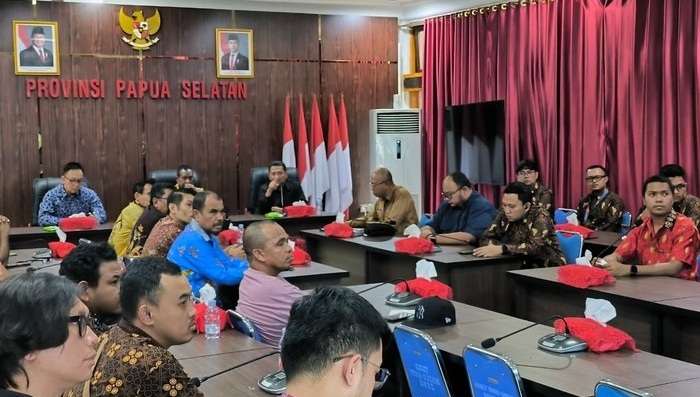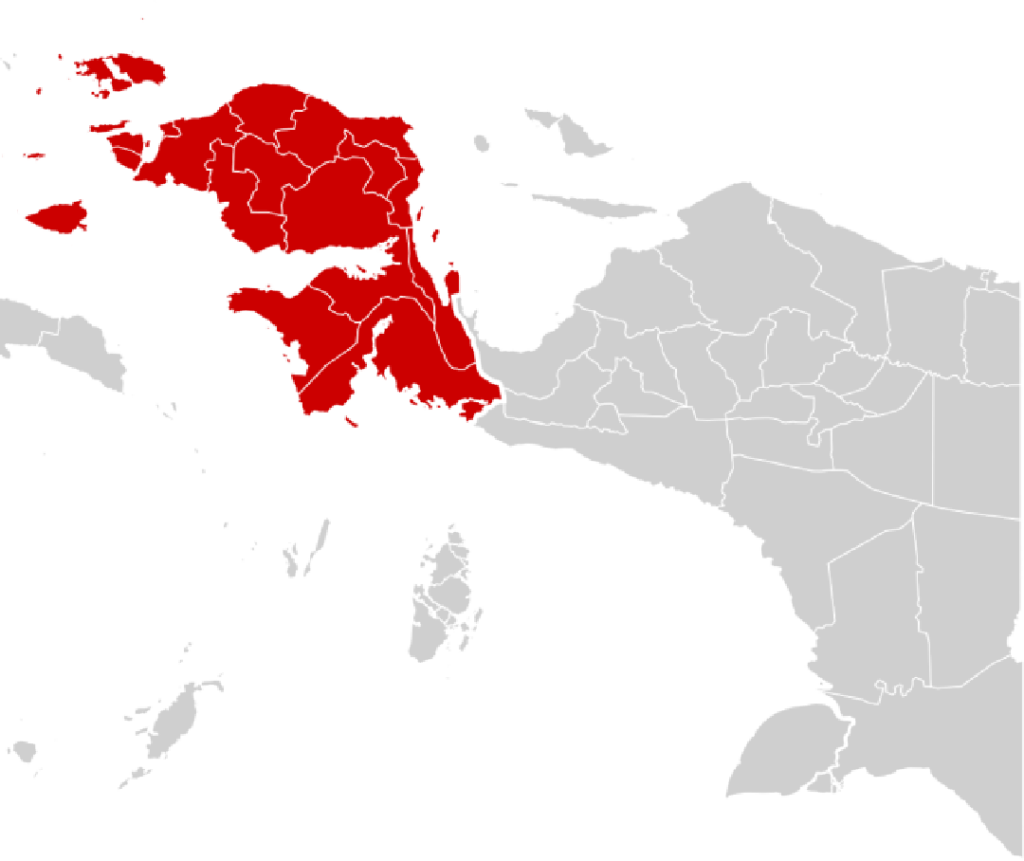In the vast expanse of Indonesia’s archipelago, where islands are separated by deep seas and rugged terrains, the promise of digital inclusion often feels distant—especially in the country’s far eastern frontiers. Yet, change is underway. PT Telkom Indonesia (Telkom), the nation’s largest telecommunications company, is taking a monumental step to close that digital gap with its ambitious Pasela 2 undersea cable project, a new network route designed to connect Merauke, Tual, and Timika.
More than just a technological endeavor, the Pasela 2 project represents a social and economic transformation for Papua Selatan (South Papua). It is a story about resilience, national connectivity, and the belief that every corner of Indonesia deserves equal access to the digital economy.
A New Chapter for Papua’s Connectivity
For decades, Papua’s connectivity challenges have mirrored its geographical isolation. While the rest of Indonesia has experienced rapid digital growth, eastern provinces have often struggled with slow, unstable internet connections and frequent service interruptions.
Telkom’s earlier Pasela 1 cable system—part of the broader Sulawesi–Maluku–Papua Cable System (SMPCS)—was a milestone in bringing broadband to the region. However, the single route proved vulnerable. Natural events, marine activities, and geological factors caused repeated cable cuts, resulting in service disruptions that affected schools, hospitals, and local businesses.
Between 2018 and 2024 alone, Telkom recorded eight major undersea cable disturbances around Merauke. Each incident not only disrupted communication but also impacted livelihoods. Online classes were suspended, digital transactions halted, and even public administration slowed down.
Recognizing this, Telkom began planning a redundant pathway—Pasela 2, which would provide an alternative data route when one segment experiences an outage. This new system will effectively create a “ring” of connectivity between Merauke, Tual, and Timika, ensuring internet stability and resilience for millions of users across Papua Selatan.
Engineering the Digital Backbone: Inside the Pasela 2 Project
According to Telkom’s Regional V Executive Vice President Amin Soebagyo, the Pasela 2 project is not just an infrastructure upgrade—it’s a long-term strategy to ensure sustainable digital development in the eastern region. The project is structured into several phases, reflecting Telkom’s layered approach to building a reliable ecosystem.
- Short-Term Solutions (2024–2025). Telkom is currently expanding local capacity in Merauke through the deployment of earth-station technology with a 25 Gbps capacity and the reinforcement of radio links to stabilize bandwidth. This step ensures immediate relief to ongoing connectivity issues while deeper infrastructure work begins offshore.
- Medium-Term Enhancements (2025–2027). The company plans to install a local Content Delivery Network (CDN) in Merauke to store popular online content locally. This move reduces dependency on long-haul international bandwidth and lowers latency—crucial for streaming, education, and e-commerce.
- Long-Term Infrastructure (Target Completion: 2028). The centerpiece is, of course, the Pasela 2 undersea fiber-optic cable, stretching thousands of kilometers beneath the sea. Once operational, it will create an integrated data route connecting the southern and northern parts of Papua to the national backbone.
Technically, the route from Merauke-Tual-Timika forms a strategic loop that complements existing SMPCS segments. In case of a disruption on the Merauke–Timika line, data traffic can be automatically rerouted via Tual, maintaining uninterrupted service. Telkom describes this as a “self-healing network”—a critical feature for regions prone to environmental and geological challenges.
The Economic Ripple: Empowering South Papua’s Digital Future
Connectivity is more than cables and signals; it is the foundation for modern economic life. In Papua Selatan, better internet means the chance to leapfrog traditional barriers and embrace the digital economy—a sector that Indonesia projects will contribute more than USD 130 billion nationally by 2025.
For local entrepreneurs and micro, small, and medium enterprises (MSMEs), a stable connection opens doors to online marketplaces, digital payments, and new business models. Farmers in Merauke’s agricultural zones can monitor weather data and commodity prices in real time. Hotel operators in Tual can reach global tourists via digital booking platforms. And ride-hailing drivers in Timika can connect with customers faster, maximizing income potential.
In education, institutions like Universitas Musamus Merauke stand to benefit enormously. Reliable internet will enable hybrid learning, virtual research collaboration, and easier access to global resources. For students and teachers who previously struggled with intermittent connections, Pasela 2 represents a shift from limitation to opportunity.
Telkom also highlights that improved connectivity will support public services and governance. Digital administration, healthcare teleconsultations, and disaster-response coordination all rely on stable communication networks. The company envisions a future where South Papua’s public infrastructure—from hospitals to local government offices—operates efficiently on a strong digital backbone.
Beyond Business: A National Mission
While the Pasela 2 project aligns with Telkom’s business objectives, its broader significance lies in its nation-building mission. As a state-owned enterprise, Telkom has long been tasked with not only pursuing profit but also ensuring equitable access to information and technology across Indonesia’s 17,000 islands.
Executive Vice President Telkom Regional V, Amin Soebagyo emphasized this dual role during meetings with South Papua’s local government:
“We are not only building infrastructure—we are building inclusion. We want every citizen, from students to small traders, to feel the benefit of connectivity.”
This sentiment echoes Indonesia’s national development agenda under the “Indonesia Digital 2045 Vision,” which prioritizes connectivity, literacy, and innovation as drivers of equitable growth. For the government, projects like Pasela 2 symbolize the commitment to ensuring that no region, however remote, is left behind in the digital revolution.
Challenges Beneath the Waves
Yet, the journey toward full digital inclusion in Papua is far from simple. The challenges Telkom faces in executing Pasela 2 are as vast as the seas the cable must traverse.
- Geographical and Environmental Obstacles. The waters around Papua are among the most complex in Indonesia. The seabed’s topography—characterized by deep trenches, shifting sediments, and coral ecosystems—requires meticulous route planning. Cables must be buried deep enough to avoid damage yet placed carefully to minimize environmental disruption.
- Human and Maritime Activity. Telkom reports that nearly half of previous cable cuts in Papua were caused by fishing activities and ship anchors. The company has been coordinating with the Indonesian Navy and local maritime authorities to establish protective zones and awareness programs to prevent future incidents.
- Permitting and Coordination. Undersea cable projects involve multiple layers of regulation—from environmental approvals to coordination with regional governments and indigenous communities. Telkom stresses its commitment to environmental compliance and local engagement, ensuring that the project proceeds with minimal ecological footprint and maximum social acceptance.
- Long-Term Investment and Sustainability. With completion targeted for 2028, Pasela 2 represents a multi-year, multi-billion-rupiah investment. Maintaining funding continuity and technical consistency over such a timeline requires coordination between central government agencies, contractors, and international partners supplying submarine cable technology.
Despite these challenges, Telkom remains confident that the project will meet its deadline, citing its experience in delivering previous large-scale undersea networks like the Palapa Ring and SMPCS systems.
From Isolation to Integration: A Digital Turning Point for South Papua
The social implications of Pasela 2 reach far beyond infrastructure metrics. In a region historically marked by geographical isolation, better internet can foster new forms of connection—both within communities and with the wider world.
For young Papuans, connectivity means access to online education, job opportunities, and creative industries. Local innovators can build digital startups serving niche regional needs, from eco-tourism promotion to indigenous culture preservation. With a stable network, South Papua could nurture its own digital ecosystem, empowering residents to shape their own economic narrative.
Moreover, as digital access expands, so too does civic participation. Online platforms enable transparency, local governance engagement, and communication between citizens and policymakers. This democratization of information—powered by infrastructure like Pasela 2—strengthens Indonesia’s unity as an archipelagic nation.
Conclusion
The Pasela 2 undersea cable is more than a technological project—it is a symbol of Indonesia’s determination to weave every island, every province, into the same digital fabric. By 2028, when the Merauke–Tual–Timika route is fully operational, South Papua will no longer be a digital outlier but a key participant in the nation’s growing online economy.
As Telkom continues to lay the groundwork beneath the ocean floor, what it is really building is a bridge—not of steel or concrete, but of light and data. And across that bridge will flow opportunity: for students connecting to virtual classrooms, for farmers accessing markets, for entrepreneurs reaching customers, and for a nation striving to unite its islands through technology.
In the words of one Telkom official, “Connectivity is not a privilege; it’s a right of every Indonesian.” The Pasela 2 cable embodies that belief—a thread of fiber linking the nation’s easternmost frontier to its digital destiny.


